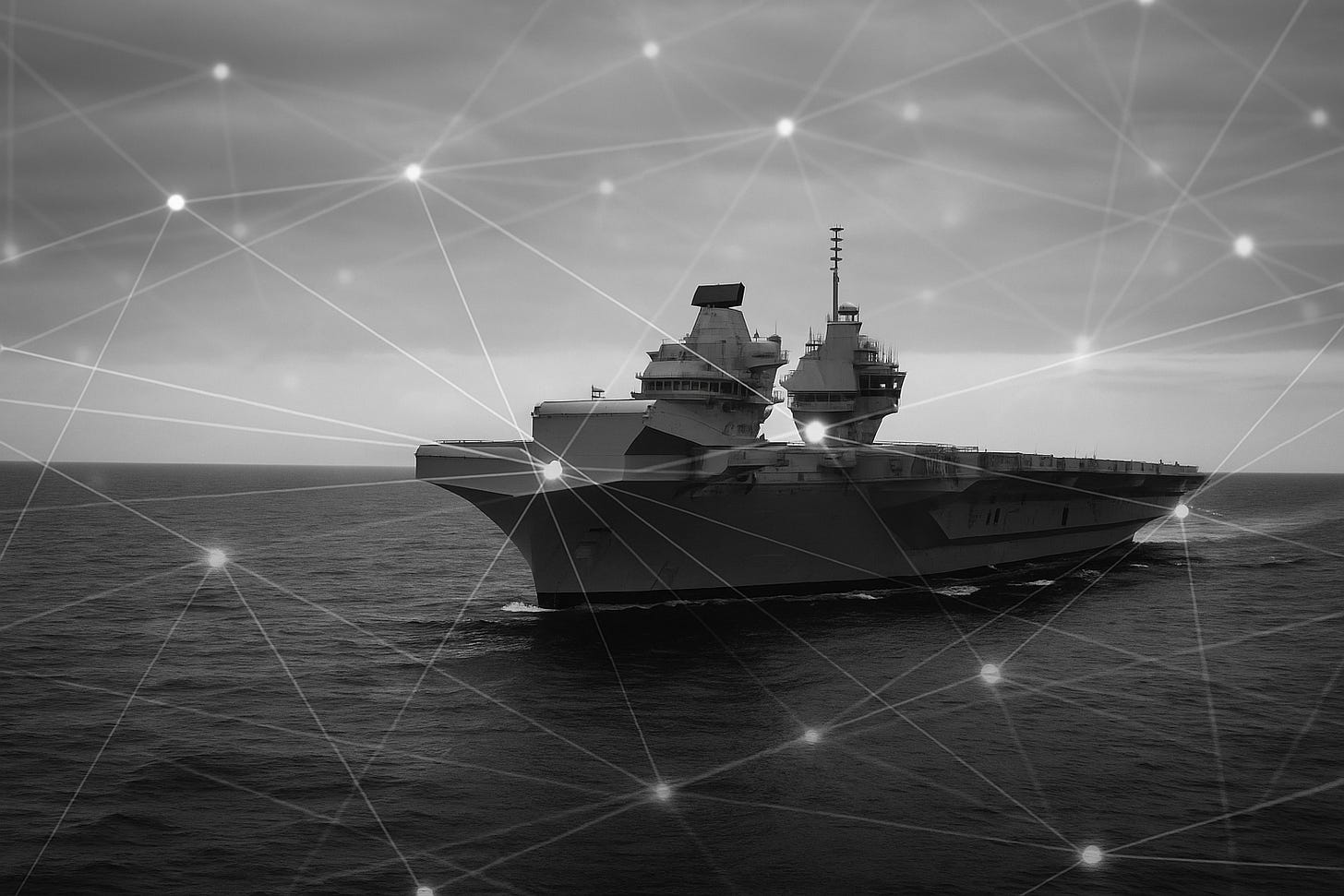Forward by Design: What Admiral Radakin’s CSIS Speech Means for the Royal Navy’s AI Future
A deep look at the UK Chief of the Defence Staff’s Washington address, and how its themes map to the Royal Navy’s AI-enabled transformation.
The Strategic Backdrop
Speaking in Washington, DC, at the Centre for Strategic and International Studies on 14 August 2025, Admiral Sir Tony Radakin delivered a message that was part reassurance, part challenge.
He framed the UK’s security around three enduring pillars: the nuclear deterrent, NATO membership, and the US alliance. But he also made it clear that these strengths must be projected forward, not hidden behind the White Cliffs. In his words, deterrence “must be forward” across land, sea, air, cyber, space, and nuclear domains.
For the Royal Navy, this is more than rhetoric. It means sustaining a global presence where influence matters, not just where it is safe.
From Fortress to Forward
Radakin dismissed any “fortress Europe” posture. Instead, he advocated proactive engagement, from the North Atlantic’s undersea cable routes to the Indo-Pacific’s contested sea lanes.
This forward stance is not about symbolic port visits. It’s about credible force: carrier strike groups, littoral response forces, and attack submarines placed where they can deter, reassure, and, if necessary, act.
For Future Navy planning, this reinforces the need for AI-enabled maritime situational awareness and decision tools that can operate across vast distances and complex threat environments.
The “Hybrid Navy” Vision
The speech aligned closely with the Strategic Defence Review 2025 roadmap:
Dreadnought-class SSBNs and SSN-AUKUS attack submarines.
A hybrid carrier air wing blending manned and unmanned systems.
Directed Energy Weapons (DEW) to counter massed drone and missile threats.
Expanded attack submarine numbers.
Deepening investments in autonomy, AI, cyber, and space integration.
This “Hybrid Navy” is not just about hardware. It’s about integration, linking sensors, shooters, and decision-makers across platforms and domains, with AI as the connective tissue.
Allies as Force Multipliers
Radakin’s emphasis on alliances was unmistakable: NATO, AUKUS, Five Eyes, and regional partnerships like the Joint Expeditionary Force and FPDA.
For Future Navy AI, this creates a non-negotiable design requirement: interoperability.
That means:
Data formats and APIs that align with NATO/AUKUS C2 architectures.
AI models that can be trained on shared datasets without breaching national security.
Systems that can slot into allied ISR and targeting networks seamlessly.
AI as a Strategic Lever
Radakin likened the importance of AI to the advent of nuclear weapons, a technology whose possession and control defines strategic advantage. His warning was clear: democracies must own and shape AI to preserve the lead.
For the Royal Navy, AI’s immediate opportunities include:
Speed-critical targeting decisions in air and missile defence.
Predictive logistics to keep forward-deployed forces supplied without overburdening supply chains.
Digital twin training environments to sharpen readiness without consistently deploying to sea.
Autonomy for mass, enabling small, unmanned systems to expand operational reach.
Operational Lessons
Recent RN deployments demonstrate the demands of forward presence:
North Atlantic: undersea cable protection and submarine deterrence.
Indo-Pacific: carrier group signalling to allies and competitors alike.
Red Sea: integrated air and missile defence against live drone and missile threats.
Each of these theatres benefits from AI systems that can fuse sensor inputs, manage intercept timelines, and anticipate logistic needs.
Future Navy AI – Priority Pathways
Global Forward Presence
AI decision-support tools for Carrier Strike and Littoral Response Groups in contested regions.
Undersea Advantage
AI-enhanced acoustic analytics and autonomous UUV operations for ASW and ISR.
Air & Missile Defence
AI battle managers linking sensors to DEWs and missile systems in real time.
Predictive Logistics
Machine learning models to anticipate and pre-position spares, munitions, and fuel.
Synthetic Training
AI-driven virtual battle environments for crew proficiency without full-scale sea deployments.
Interoperability
NATO/AUKUS-compliant interfaces for cross-alliance data and command integration.
Closing Reflection
Admiral Radakin’s CSIS address was, at its core, a call to stay forward, stay integrated, and stay ahead. For the Royal Navy, AI is not an optional extra in that journey, it’s a strategic enabler.
The challenge now is to ensure that as platforms and weapons evolve, AI capabilities are built in from day one, with the same seriousness as steel, propulsion, and firepower.


